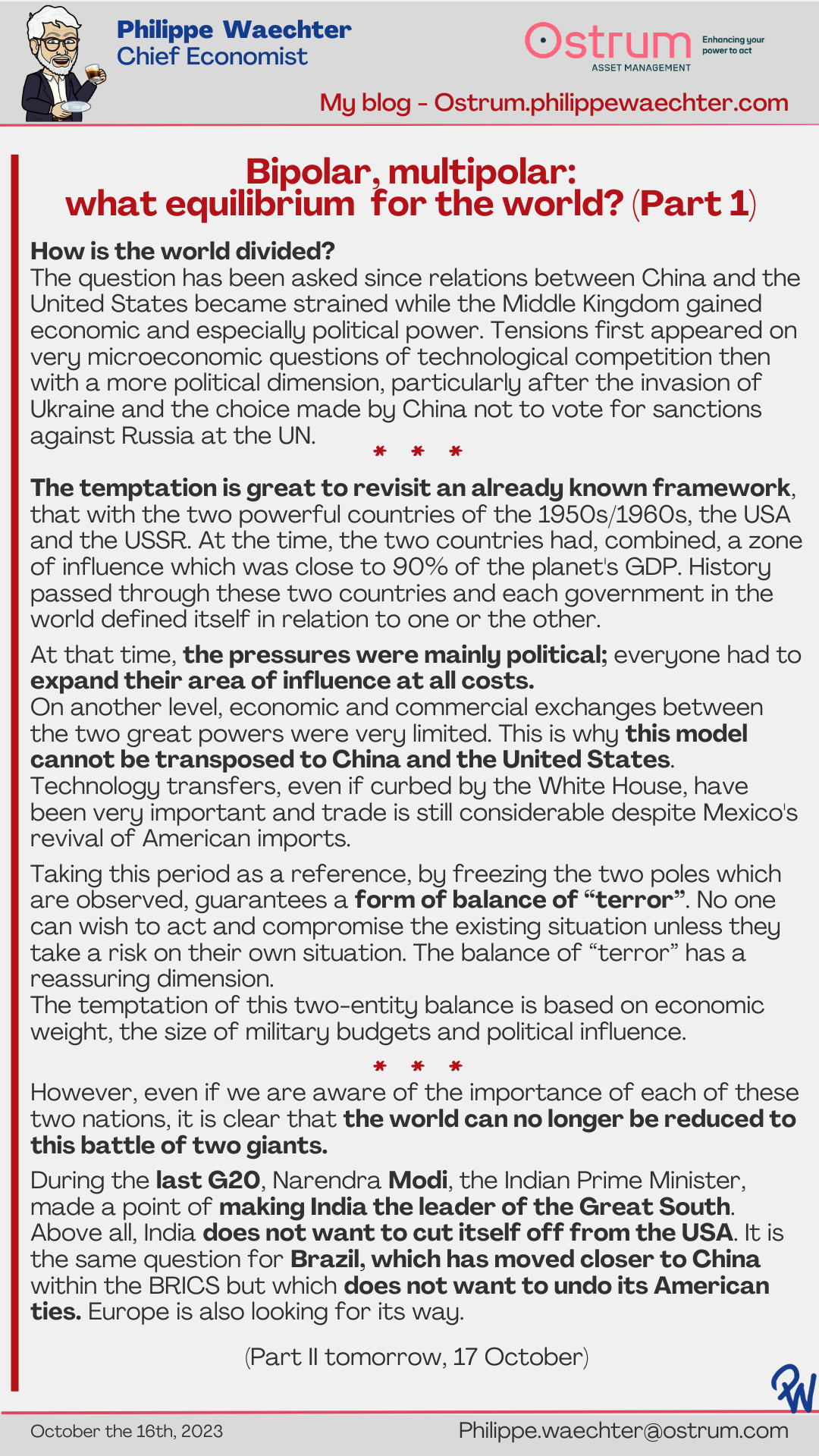How is the world divided?
The question has been asked since relations between China and the United States became strained while the Middle Kingdom gained economic and especially political power.
Tensions first appeared on very microeconomic questions of technological competition then with a more political dimension, particularly after the invasion of Ukraine and the choice made by China not to vote for sanctions against Russia at the UN.
The temptation is great to revisit an already known framework, that with the two powerful countries of the 1950s/1960s, the USA and the USSR. At the time, the two countries had, combined, a zone of influence which was close to 90% of the planet’s GDP. History passed through these two countries and each government in the world defined itself in relation to one or the other.
At that time, the pressures were mainly political; everyone had to expand their area of influence at all costs. On another level, economic and commercial exchanges between the two great powers were very limited. This is why this model cannot be transposed to China and the United States. Technology transfers, even if curbed by the White House, have been very important and trade is still considerable despite Mexico’s revival of American imports.
Taking this period as a reference, by freezing the two poles which are observed, guarantees a form of balance of “terror”. No one can wish to act and compromise the existing situation unless they take a risk on their own situation. The balance of “terror” has a reassuring dimension. The temptation of this two-entity balance is based on economic weight, the size of military budgets and political influence.
However, even if we are aware of the importance of each of these two nations, it is clear that the world can no longer be reduced to this battle of two giants.
During the last G20, Narendra Modi, the Indian Prime Minister, made a point of making India the leader of the Great South. Above all, India does not want to cut itself off from the USA. It is the same question for Brazil, which has moved closer to China within the BRICS but which does not want to undo its American ties. Europe is also looking for its way.
(Part II tomorrow, 17 October)





